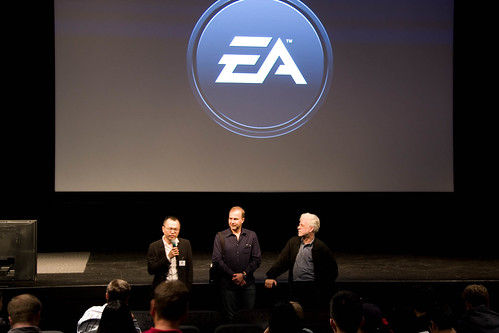
In this week’s elective class, Bryan Neider, the Senior Vice President and Chief Operating Officer for Electronic Art’s Games Label, gave us a talk on the current issues in game industry. Prior to talking, he showed us the video of EA Games – Battlefield Bad Company, Spore, Spore Creature Creator, Warhammer Online, and Dead space. EA released many cool games this year.
The summary of current issues is as follows.
- Current economic conditions
- o Today’s economy is in a highly unusual state of uncertainty and it has created heightened anxiety for consumers
- In past downturns, interactive has been less impacted by market slumps compared with other entertainment
- Consumer buying habit patterns
- The number of casual consumer and online multiplayer, the demand for social experience is increasing
- Marketing is still gravitating to quality
- As the international demand for video games rises, it is important to localize games to meet consumer preferences and tastes
- The increasing demand for second hand games has risen significantly
- Connected consumers
- Games are becoming a "service" – transition from only packaged goods, to a hybrid model, where the game is “always on
- Consumers expect online features and social interaction
- Ongoing relationship with customers
- Customer service takes on new meaning - moving up the value chain from fixing "bugs" and providing "patches," to managing and refining the customers' entertainment experience
- Customers are starting to expect the interactive experience to evolve to meet their preferences and gaming "style"
- The interactive experience will begin to be tailored to the consumer
- Impact to game design & team structure
- Teams are required to expand their design “horizons” and they are well underway in changing their designs
- Multiplayer, online, episodic, downloadable content are the core deliverables to tomorrow's games
- Data mining is becoming a core competency - understanding how people interact with games - this will allow improving play-balance and tailor the interactive experience to each consumer's style and skill
- The "user interface" is very important and now requires consumer feedback early in the design process
- More focus on high quality art/audio
Thanks to his talk, we were able to gain a more broadened perspective into the interactive game industry. He also presented us with Spore creature creator. We really appreciated his talks and the presents.














